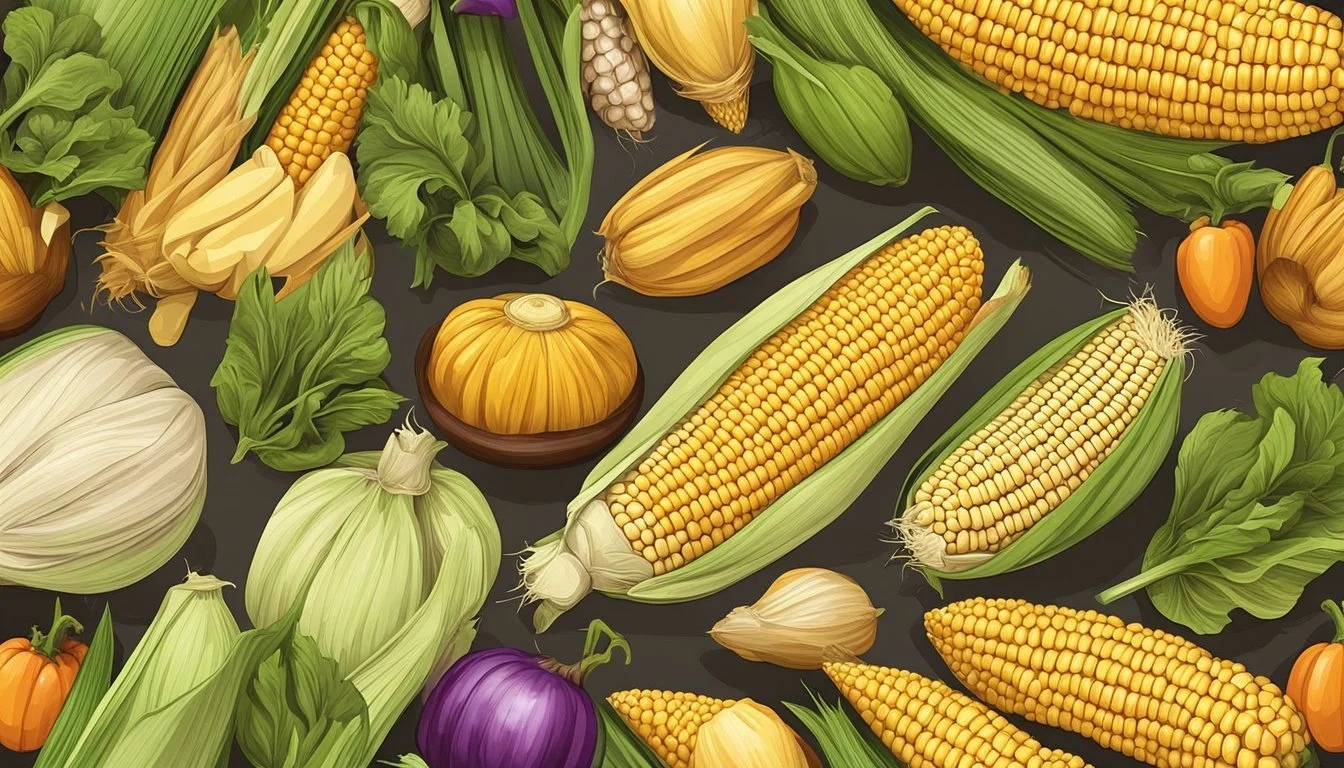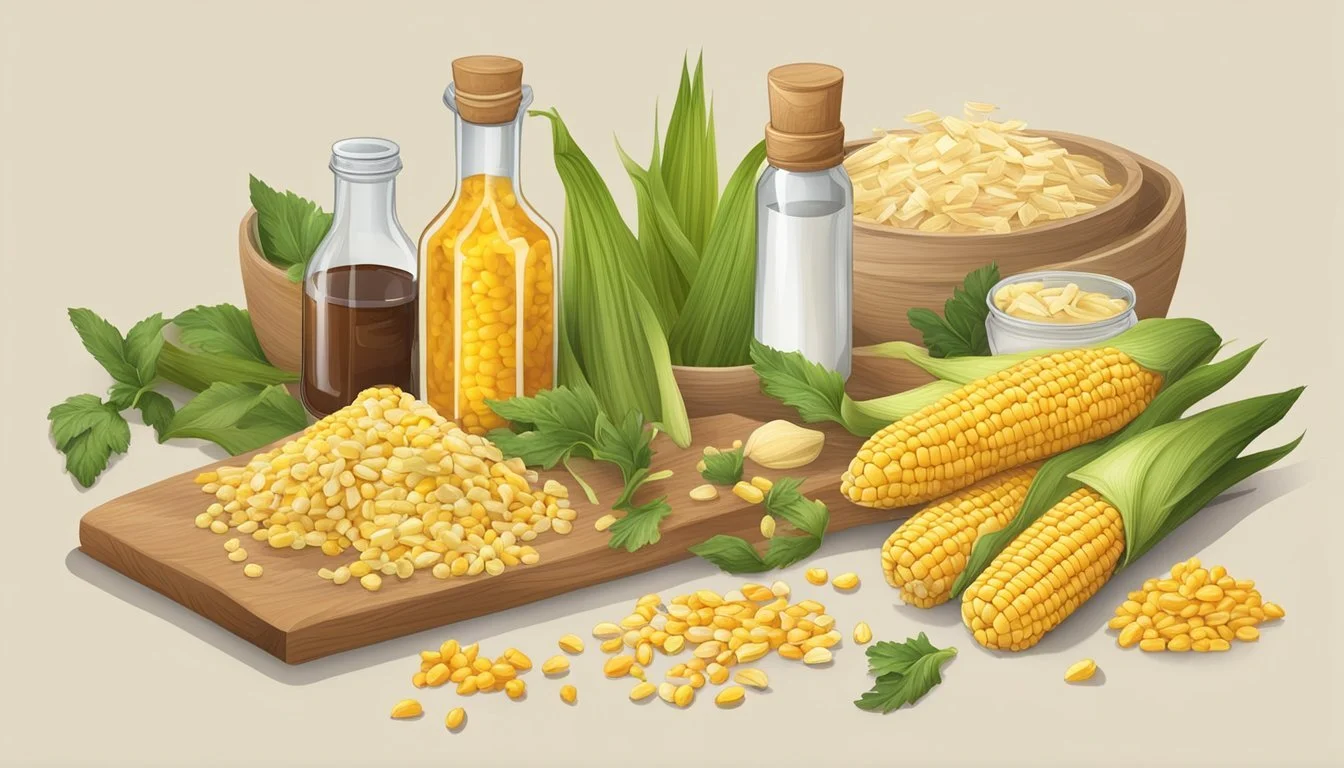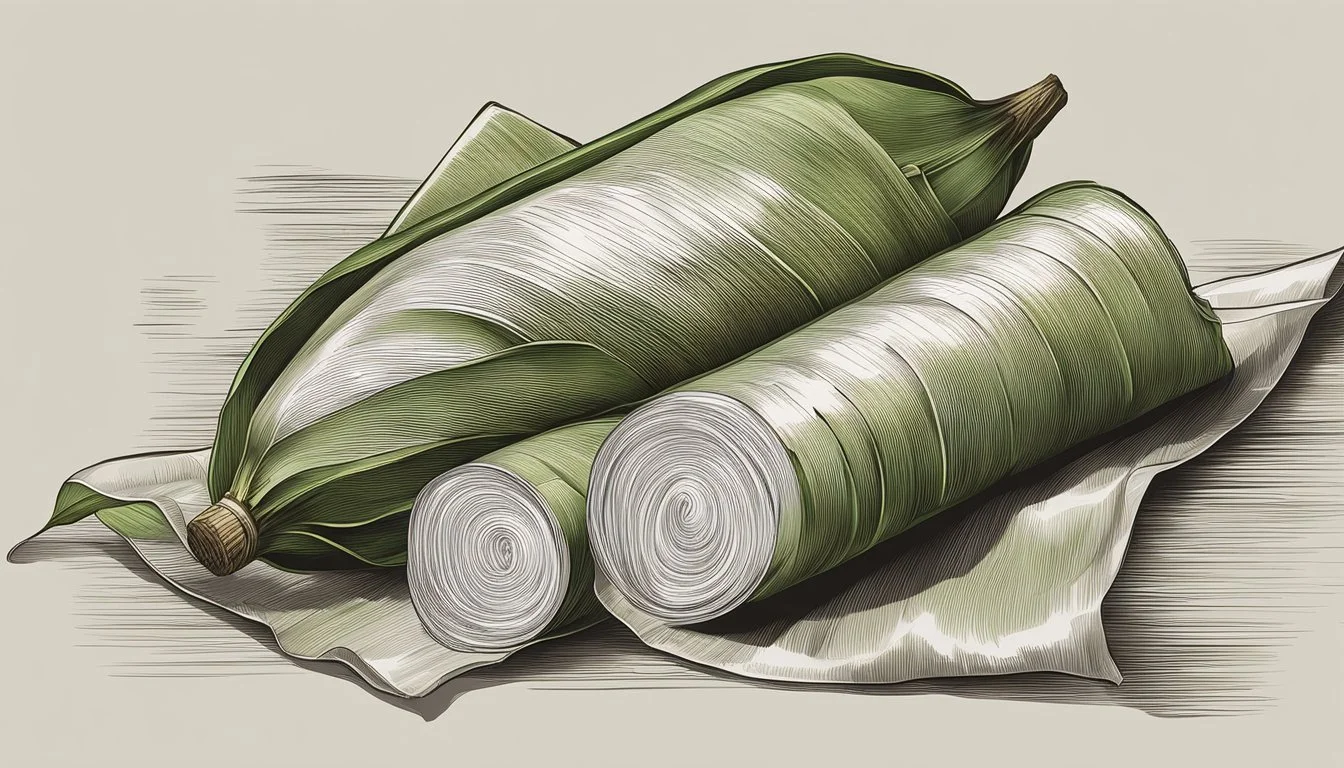Corn Husks Substitutes
Best Alternatives for Cooking and Wrapping
Mexican cuisine enthusiasts know that tamales are a staple dish, often wrapped in traditional corn husks. However, finding corn husks for tamales can sometimes be challenging. Fortunately, there are several excellent alternatives that can be used without compromising the taste or quality of the tamales. Banana leaves, for example, are a fantastic substitute that impart a distinct, earthy flavor to tamales, often enhancing the overall eating experience.
Another convenient option is parchment paper, also known as vegetable parchment. It's widely available and easy to use, making it a favorite among home cooks. Additionally, grapevine leaves offer a slightly different experience; their unique flavor can be mellowed by soaking them before use, making them another viable alternative for wrapping tamales.
By exploring these substitutes, one can enjoy delicious tamales even when traditional corn husks are not at hand. The versatility of these alternatives ensures that tamale-making remains accessible and enjoyable, no matter the circumstances.
Significance of Corn Husks in Tamale Preparation
Corn husks play an integral role in tamale preparation, contributing to the authentic flavor, texture, and integrity of the tamale dough.
Traditional Role of Corn Husks
Corn husks have been used for centuries in tamale preparation. Historically, they serve as the primary wrapping material, keeping the masa and filling together during cooking. This method is traditional in many Latin American cuisines. The use of corn husks also helps maintain the shape of the tamale, allowing for even steaming and preventing the dough from drying out. They not only provide a natural and biodegradable packaging option but also add a cultural authenticity to the dish.
Flavor and Texture Contribution
Corn husks impart a subtle yet distinct flavor to tamales. When steamed, the essence of the husk infuses into the dough and filling, contributing a slightly earthy note that is characteristic of traditional tamales. This flavor is something that alternatives like parchment paper or aluminum foil cannot replicate. Texture-wise, corn husks create a firmer outer layer, which contrasts pleasantly with the soft, moist masa inside. This duality enhances the overall eating experience, making each bite more enjoyable.
Impact on Tamale Dough Integrity
Using corn husks is crucial for maintaining the integrity of the tamale dough. When masa is wrapped in corn husks, it is kept moist and secure, preventing it from becoming soggy or mushy during cooking. This is particularly important for achieving the right consistency; proper steaming ensures the masa remains tender yet firm. Corn husks also aid in even heat distribution, which is vital for cooking the tamale uniformly. Without them, achieving the perfect texture for both the dough and the filling would be much more challenging.
Primary Substitutes for Corn Husks
For those looking to prepare tamales without corn husks, there are several excellent alternatives available. Each substitute offers unique characteristics in terms of flavor, ease of use, and availability.
Banana Leaves
Banana Leaves are a popular alternative due to their distinct, earthy flavor that enhances the taste of tamales.
These leaves are typically found in Asian and Latin grocery stores. Before using, it's essential to wash and soften them by briefly passing them over an open flame or submerging them in hot water. This makes them more pliable for wrapping the tamales. Double-wrap tamales to ensure they remain intact during steaming.
Parchment Paper
Parchment Paper provides a convenient and highly accessible substitute.
This paper is non-stick and withstands the heat of steaming, ensuring that tamales don’t stick to the wrapping. It doesn't impart any additional flavor, maintaining the integrity of the tamale’s original taste. It's also easy to cut and fold, simplifying the wrapping process. Additionally, parchment paper is often used in baking, making it a versatile kitchen item.
Wax Paper
Wax Paper can be another handy substitute, particularly when other options are unavailable.
It's best suited for tamales due to its moisture-resistant properties that prevent tamales from drying out during steaming. However, wax paper can sometimes be more prone to tearing, so care must be taken during wrapping. It is also more widely available in regular grocery stores, adding to its convenience.
Aluminum Foil
Aluminum Foil offers a durable and flexible alternative.
This material is sturdy and capable of withstanding the steaming process without ripping. It is ideal for ensuring that tamales remain securely wrapped, maintaining their shape and moisture. Aluminum foil doesn't add any flavor, making it a neutral choice. It's also widely accessible in most households, making it a convenient option for many.
Vegetable-Based Alternatives
In the absence of corn husks, several vegetable-based alternatives can be used for making tamales. Each option brings unique flavors and textures, while also catering to vegetarian and vegan preferences.
Cabbage Leaves
Cabbage leaves are a popular option. They have a natural flexibility and are large enough to envelop tamale fillings securely. Before use, cabbage leaves should be blanched in boiling water to soften their texture.
Nutritionally, cabbage is a good source of vitamins K and C, as well as fiber. This makes it a healthier alternative to corn husks. Additionally, since cabbage leaves are readily available, they are a convenient option for many home cooks.
Chard Leaves
Chard leaves are another great alternative. They have a slightly bitter taste, similar to spinach, which can complement the flavors of tamales well. Like cabbage leaves, chard should be blanched before use to soften them.
The nutritional value of chard is impressive, with high levels of vitamins A, C, and K, as well as iron and potassium. This makes chard leaves particularly appealing for those looking for nutrient-dense substitutes.
Turnip Leaves
Turnip leaves are lesser-known but effective substitutes. They offer a slightly peppery flavor which can add an extra dimension to tamales. Again, blanching is recommended to make the leaves pliable.
Turnip greens are rich in essential nutrients like vitamins A, C, and K, along with calcium and folate. This makes them an excellent option for those aiming to enhance the nutritional profile of their tamales.
Grape Leaves
Grape leaves can be used as well. They have a slightly more bitter flavor than corn husks, which can be mitigated by soaking them for at least an hour before use.
Soaking helps to soften the leaves and remove some bitterness. Grape leaves are a staple in many Mediterranean dishes and carry a distinctive taste that may be beneficial depending on the desired flavor profile of the tamales.
All these vegetable-based alternatives not only provide unique flavors but also add nutritional benefits, aligning well with vegetarian and vegan dietary preferences.
Adapting Recipes with Substitute Materials
When using substitutes for corn husks in cooking, it is crucial to adjust steaming techniques and consider how different wraps can influence the flavor of the dish. These factors significantly affect the outcome and ensure the success of your recipes.
Adjusting Steaming Techniques
Different substitute materials can require changes in steaming methods. For instance, banana leaves need to be soaked in hot water to become pliable. This ensures they can fold without breaking.
Parchment paper is another option. It should be cut to fit the size of the tamale dough. Parchment paper doesn't infuse additional flavor, so adjustments may be necessary if seeking that traditional taste.
Grape vine leaves have a slight bitterness. Soaking them for an hour before use can help mitigate this. Also, the steaming time might vary slightly due to the thickness of these leaves.
Flavor Pairing with Different Wraps
The choice of substitute can influence the flavor profile of the dish. Banana leaves impart a subtle, earthy flavor that pairs well with savory ingredients like seasoned meats or broths.
Parchment paper does not alter the flavor, making it a neutral option perfect for those who prefer the traditional taste profile without any additional flavors from the wrap.
Grape vine leaves have a unique flavor that complements tangy ingredients such as feta cheese. This combination can add a Mediterranean twist to tamales.
Experimenting with different wraps allows for creative freedom but requires careful consideration of how each wrap interacts with other ingredients.
Considerations for Corn Husk Substitutes
When choosing substitutes for corn husks, it's important to consider dietary restrictions, preferences, and the potential for using alternative wrappers in crafting projects.
Dietary Restrictions and Preferences
Substitutes like banana leaves, parchment paper, and aluminum foil are popular alternatives due to their availability and adaptability.
Banana leaves are especially favored in vegan and vegetarian dishes because they impart a similar earthy flavor to tamales, mirroring that of corn husks. They also fit well with dietary preferences, as they tend to be more natural and less processed.
For those with allergies or specific dietary restrictions, parchment paper and aluminum foil offer neutral, allergen-free options. These materials do not impart any flavor, making them suitable for recipes where the husk flavor is not crucial.
Crafting with Alternative Wrappers
Alternative wrappers aren't just for cooking; they can also be utilized in crafting. Parchment paper and aluminum foil are widely accessible and can be used in crafts such as creating molds, models, or protective wraps.
Banana leaves, with their thicker texture, are suitable for creating more durable items. Their tropical flair can add an aesthetic element to the project.
For crafters seeking eco-friendly materials, banana leaves are biodegradable and compostable, aligning with sustainable practices. These alternatives ensure versatility in projects without compromising on accessibility or creativity.
Additional Uses of Corn Husk Alternatives
Corn husk alternatives like banana leaves, grapevine leaves, and parchment paper offer various practical applications beyond tamale making. These substitutes prove beneficial in the kitchen while also serving gardening and composting needs.
Versatile Applications in the Kitchen
Banana leaves are not only great for wrapping tamales but also excellent for grilling and steaming a variety of dishes due to their non-stick properties. They add an earthy flavor and can be used to line plates for serving food elegantly.
Parchment paper is another versatile alternative, useful for baking and cooking, providing a non-stick surface that simplifies cleanup. It's particularly effective for fish parcels and baking pastries.
Grapevine leaves, typically used in Mediterranean cuisine, work well for wrapping foods like dolmas. Their slightly bitter taste can be mitigated by soaking them, which also makes them more pliable for wrapping.
Gardening and Composting Benefits
Corn husk alternatives offer surprising benefits in gardening and composting. Banana leaves decompose quickly and can be used as mulch or compost, enriching the soil with valuable nutrients.
Chard and turnip leaves also decompose fast and can be incorporated into a compost pile, helping to create a nutrient-rich soil amendment.
Coffee filters provide an inexpensive and biodegradable option for gardeners. They hold moisture well and can be used in plant pots to cover drainage holes, preventing soil loss while allowing water to drain effectively.
These alternatives help reduce waste and promote sustainable gardening practices.







